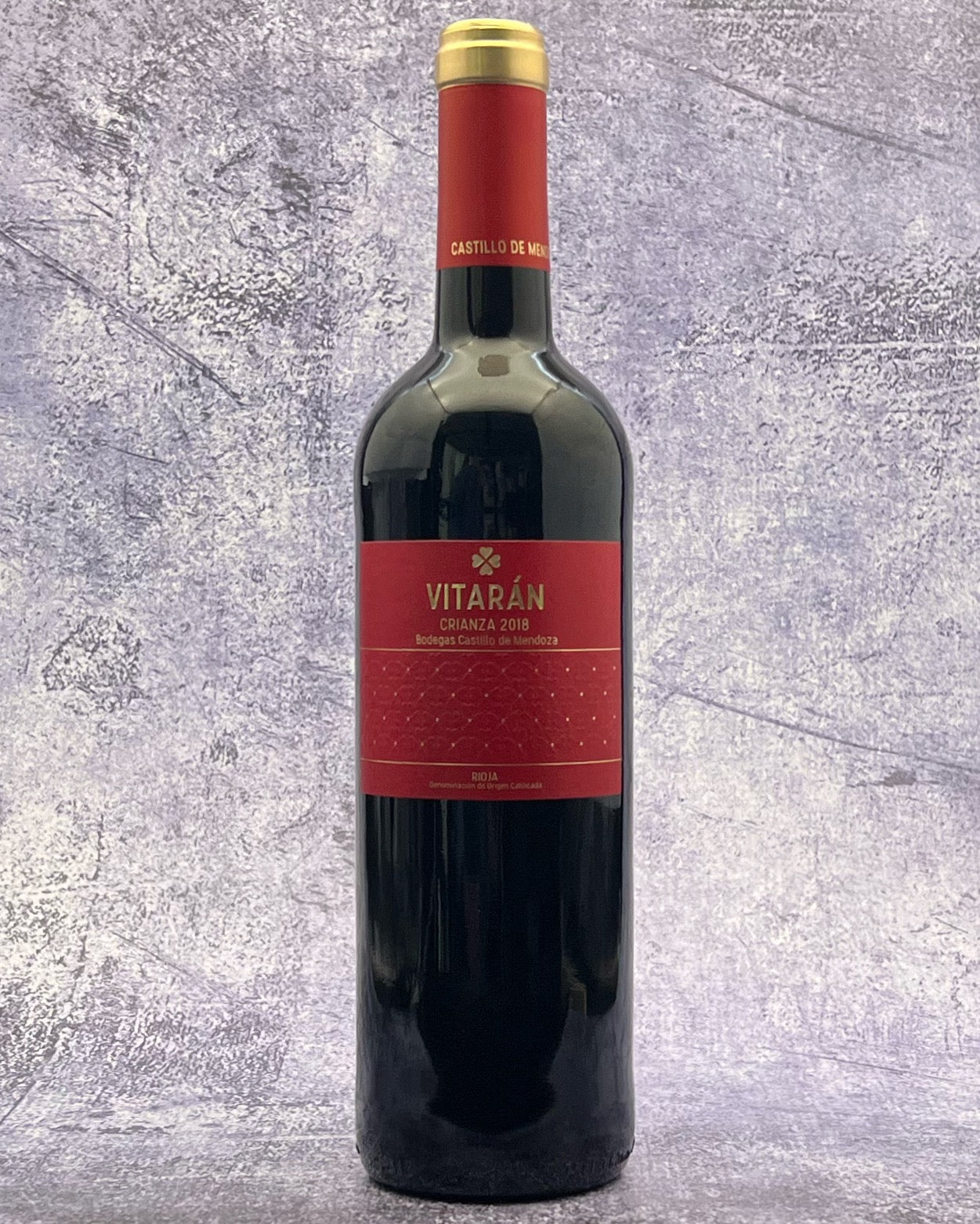Description
From: La Rioja, Spain
Varietal: Tempranillo
Tasting Notes: This dry red wine presents a striking garnet red color. On the nose, it offers a harmonious blend of tertiary aromas from oak aging, including vanilla, coconut, and cinnamon, seamlessly integrated with the rich scents of blackberries and plums. The palate is well-balanced, featuring mild acidity and well-structured tannins that create a pleasing harmony. The finish is clean and aromatic, leaving a lingering impression of spicy notes.
Pairing: Traditional pairings include grilled meats such as lamb chops, beef steaks, or pork tenderloin, where the wine's balanced acidity and tannins enhance the flavors. Roasted vegetables like mushrooms, bell peppers, and eggplant also complement the wine's spicy and fruity notes. Aged cheeses such as Manchego, Gouda, or Pecorino balance the wine’s tannins and acidity beautifully. Hearty stews, especially those with rich tomato bases and aromatic herbs, like traditional Spanish lamb or beef stews, match the wine’s complexity well. Classic Spanish tapas, such as chorizo, patatas bravas, or jamón ibérico, highlight the wine’s spicy and fruity characteristics. Additionally, the diverse flavors of a traditional paella, particularly with a meat or mixed (meat and seafood) focus, complement the wine’s robust profile.
For unconventional pairings, try it with dark chocolate desserts, where the wine's tannins and fruity notes contrast the richness of the chocolate, or with spicy Asian dishes like Szechuan beef, where the wine's acidity and spice can stand up to the bold flavors. Even a rich mushroom risotto or a savory blue cheese tart can bring out new dimensions in this versatile wine.
Hunan Beef With Cumin
Recipe from Fuchsia Dunlop
Adapted by Anne Mendelson
About. Bodegas Castillo de Mendoza embodies La Rioja's viticultural history, seamlessly blending centuries-old traditions with modern technology and ecological viticulture. Wine production began here over a century ago within the walls of the Castle of San Vicente de la Sonsierra, where generations of the Mendoza family crafted wines for family and friends in a small, century-old cave.
In 1994, Eloy Antonio, a member of the Mendoza family, decided to expand and restore an old seventeenth-century distillery, transforming it into a new winery. This marked the official inception of Bodegas Castillo de Mendoza. The winery’s activities grew, necessitating another significant move in 2001 to a state-of-the-art facility. This new construction, featuring a draft excavated in living rock, married the traditional Rioja style with contemporary winemaking technology.
The winery now boasts 35 hectares of vineyards scattered across various plots in San Vicente de la Sonsierra. Pioneering in organic agriculture, Castillo de Mendoza planted its first ecological vineyard in Alto de Mindiarte in 2000. This vineyard is surrounded by a natural wooded environment, thriving with fauna and flora. The year 2004 saw the birth of Noralba, the winery’s flagship organic wine, in honor of the owners' granddaughters, Nora and Alba.
Castillo de Mendoza is also committed to sustainability. The winery employs recycled materials and low-CO2 emission capsules made from biologically based polyethylene. Its labels, crafted from sustainable materials, and lightweight bottles help reduce the carbon footprint. Even the natural corks are free from bleaching chemicals, reflecting its dedication to environmental responsibility.
In the last decade, Castillo de Mendoza has gained substantial international recognition. Their wines, celebrated for their quality, are now available across Europe, Asia, and America. The winery’s commitment to excellence is reflected in the numerous prestigious awards it has garnered, affirming the high esteem in which its wines are held globally.

